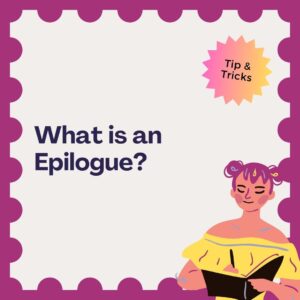What is an Epilogue? Definition, Types & Examples
An epilogue is a powerful literary device that serves as a concluding section of a story, providing closure and insight into the fates of characters after the main narrative has ended. Whether in novels, plays, or films, epilogues can enhance the reader’s experience by tying up loose ends, offering reflections on the events that transpired, and sometimes hinting at future developments. This comprehensive guide will explore what an epilogue is, its purpose, types, examples in literature and film, and practical tips for writing effective epilogues.

Table of Contents
Definition of an Epilogue
An epilogue (from the Greek epílogos, meaning “conclusion”) is a section at the end of a literary work that serves to provide additional information about the story or its characters after the main plot has concluded. It can take various forms, including a narrative summary, a character’s reflection, or even a speech delivered by one of the characters.
Key Features of an Epilogue:
- Placement: Appears after the final chapter.
- Content: Offers insights into characters’ futures or comments on the story’s events.
- Tone: Can vary from reflective to hopeful or even somber.
The Purpose of an Epilogue
Epilogues serve several important purposes in storytelling:
- Closure: They provide a sense of resolution by addressing unanswered questions and tying up loose ends.
- Character Development: They reveal how characters have changed or evolved since the main events of the story.
- Thematic Exploration: They can reinforce themes or messages conveyed throughout the narrative.
- Foreshadowing Future Events: In series or sequels, epilogues can hint at what may come next.
Types of Epilogues
Epilogues can be categorized based on their form and function:
Literary Epilogues
In literature, epilogues often summarize character fates and reflect on the story’s themes.
Example:
In Pride and Prejudice by Jane Austen, the epilogue summarizes the marriages and future happiness of key characters.
Dramatic Epilogues
In plays, an epilogue may be delivered as a speech by an actor addressing the audience directly.
Example:
At the end of Shakespeare’s Romeo and Juliet, the Prince delivers lines that reflect on the tragedy and its implications for both families.
Film Epilogues
In films, epilogues can take the form of scenes that occur after the credits roll, providing additional context or closure.
Example:
In The Lord of the Rings: The Return of the King, an epilogue shows Frodo returning to the Shire and hints at his future.
Examples of Epilogues in Literature
Analyzing well-crafted epilogues can help writers understand their effectiveness:
Example 1: The Handmaid’s Tale by Margaret Atwood
The novel concludes with a symposium in the future where scholars discuss Gilead’s history, providing context for Offred’s story and hinting at societal changes.
Example 2: Harry Potter and the Deathly Hallows by J.K. Rowling
The epilogue jumps forward nineteen years to show Harry as a father, offering closure on his journey and allowing readers to see how characters have settled into their lives.
Example 3: The Great Gatsby by F. Scott Fitzgerald
While not traditionally structured as an epilogue, Nick Carraway’s final reflections serve to summarize Gatsby’s life and critique American society.
Examples of Epilogues in Film
Film epilogues often provide visual closure that complements narrative arcs:
Example 1: Inception
The film ends with Cobb reuniting with his children; however, it leaves viewers questioning reality by not revealing whether he is still dreaming.
Example 2: Toy Story 3
The epilogue shows Andy leaving his toys with Bonnie, symbolizing growth and change while providing emotional closure for viewers.
Example 3: The Shawshank Redemption
The final scenes show Red’s journey after prison, concluding with hope as he reunites with Andy in Mexico.
How to Write an Effective Epilogue
Writing an effective epilogue involves careful consideration and planning:
Consider Your Audience
Think about what your readers want from your story’s conclusion:
- Do they seek closure?
- Are they looking for hints about future developments?
Reflect on Themes
Ensure your epilogue reinforces key themes from your story:
- What message do you want to convey?
- How can you summarize these themes effectively?
Provide Closure
Address any unresolved plot points or character arcs:
- Summarize character fates succinctly.
- Avoid introducing new conflicts that could distract from resolution.
Keep It Concise
An effective epilogue should be brief yet impactful:
- Aim for clarity; avoid excessive detail.
- Focus on essential information that enhances understanding.
Common Mistakes to Avoid in Writing Epilogues
When crafting your epilogue, be mindful of these common pitfalls:
- Overexplaining: Avoid reiterating details already covered in your story; instead, provide new insights.
- Being Too Ambiguous: While some ambiguity can be effective, ensure your readers walk away with a clear understanding.
- Neglecting Tone: Maintain consistency with your story’s tone; an incongruous tone can confuse readers.
- Lengthy Expositions: Keep it concise; lengthy explanations can detract from impact.
The Relationship Between Epilogues and Other Literary Devices
Epilogues often interact with other literary devices to enhance storytelling:
- Foreshadowing: Hints dropped earlier can find resolution in the epilogue.
- Symbolism: Objects or themes introduced during the narrative can gain deeper meaning through the epilogue.
- Character Development: The growth shown in an epilogue reflects character arcs established throughout the story.
FAQs About Epilogues
1. What is an epilogue?
An epilogue is a section at the end of a literary work that provides closure to the story. It often reveals the fates of the characters and may take place in the future, offering additional information that helps clarify the narrative and resolve any lingering questions.
2. What is the purpose of an epilogue?
The primary purpose of an epilogue is to give readers a sense of closure after the main events of the story. It can summarize what happens to characters after the climax, address unresolved plot points, and sometimes hint at future developments or sequels.
3. How does an epilogue differ from a conclusion?
While both serve to wrap up a story, a conclusion typically occurs within the last chapter and focuses on summarizing themes and events. An epilogue, on the other hand, takes place after the main story has ended and provides new information about what happens afterward.
4. Can you provide examples of famous epilogues?
Yes! Some well-known examples include:
- Harry Potter and the Deathly Hallows: The epilogue shows the main characters as adults, sending their children off to Hogwarts.
- The Handmaid’s Tale by Margaret Atwood: The epilogue is presented as a future symposium discussing the events of Gilead.
- The Great Gatsby: The final section serves as an epilogue reflecting on Gatsby’s legacy and the American Dream.
5. Are epilogues necessary in all stories?
No, not all stories require an epilogue. They are optional and should be used when they add value to the narrative or help clarify character fates. Some stories may conclude effectively without one.
6. What genres commonly use epilogues?
Epilogues are often found in various genres, including:
- Fantasy: To wrap up complex plots and character arcs.
- Mystery/Thriller: To reveal how crimes were solved or to provide closure.
- Romance: To show couples’ futures together.
- Young Adult: To depict characters’ growth over time.
7. How long should an epilogue be?
There is no strict length for an epilogue; however, it is generally concise—often just a few paragraphs to a couple of pages—enough to convey necessary information without dragging on.
8. Can an epilogue change the tone of the story?
Yes, an epilogue can shift the tone or style from that of the main narrative. For example, it might adopt a more reflective or hopeful tone compared to a darker main story, depending on what the author wishes to convey.
9. How should I approach writing an epilogue?
When writing an epilogue:
- Consider what unresolved questions readers may have.
- Decide what future events or character developments you want to highlight.
- Maintain consistency with your narrative voice but feel free to adjust tone if needed.
- Keep it concise and focused on providing clarity rather than retelling previous events.
10. Are there any pitfalls to avoid when writing an epilogue?
Common pitfalls include:
- Making it too lengthy or detailed, which can detract from its purpose.
- Introducing new characters or subplots that confuse rather than clarify.
- Failing to connect it meaningfully with the main story, leaving readers feeling unsatisfied.
Conclusion
An epilogue is a valuable literary device that provides closure, and insight into character fates, and reinforces themes within a narrative. By understanding its purpose and employing effective writing techniques, you can craft compelling epilogues that resonate with readers long after they finish your work.




